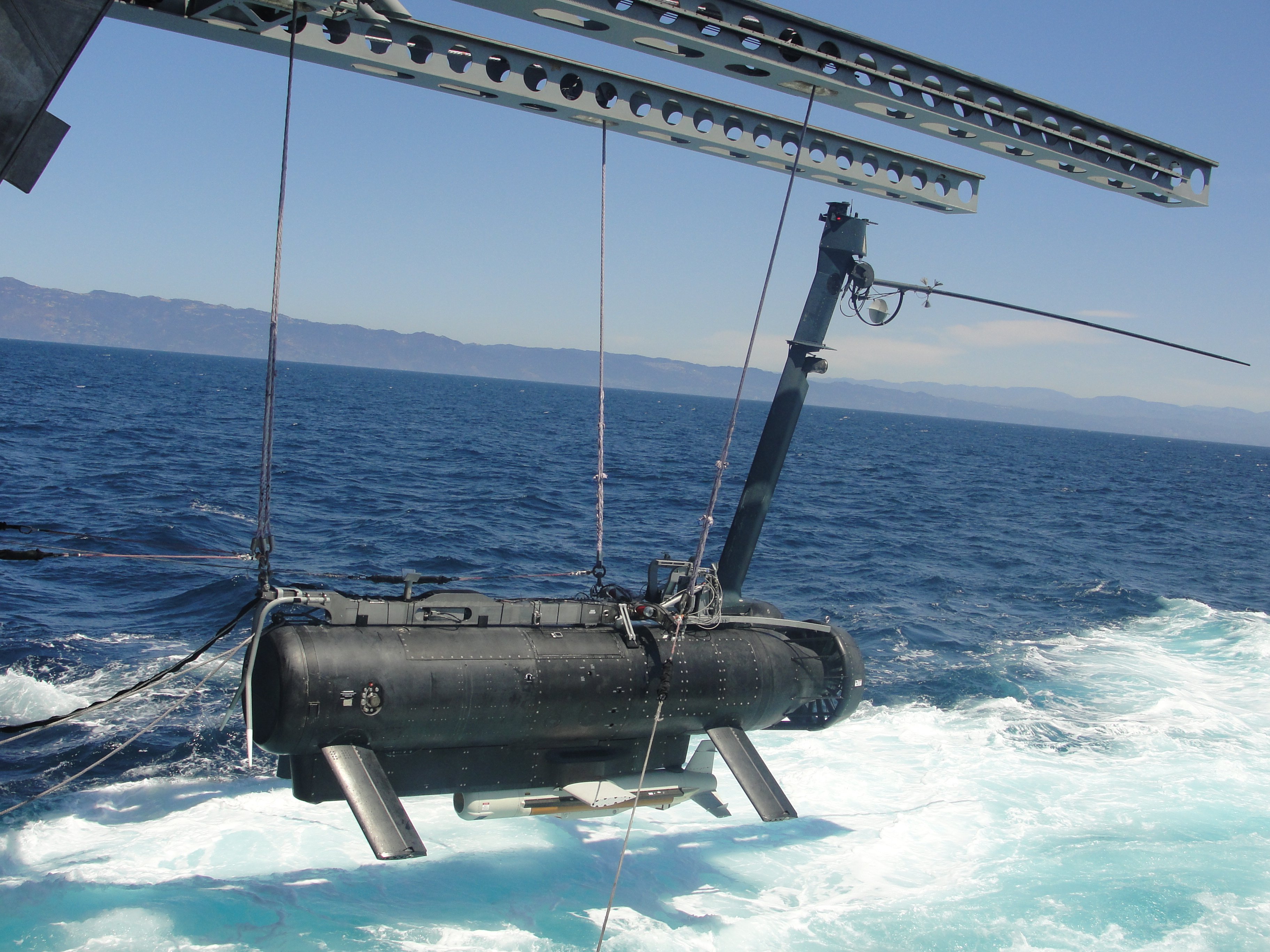
The Senate Armed Services Committee wants to cut funding for the Littoral Combat Ship’s (LCS) mine countermeasures (MCM) mission package until the program can prove it meets all requirements in its initial operational test and evaluation (IOT&E) this summer.
The committee passed its version of the annual defense bill on Thursday, and in it is a $55.8 million cut from the MCM mission package and a $65.6 million cut from the Remote Minehunting System (RMS).
A committee aide told USNI News that both the Director of Operational Test and Evaluation and the Government Accountability Office had expressed concerns about the RMS and the mission package as a whole meeting its requirements. The Navy already has more than enough equipment to conduct the tests this summer – the Navy needs four Remote Multi-Mission Vehicles (RMMVs) and has 10, and it needs three AN/AQS-20A mine-detecting sonars and has six, the aide said – so the funding cut will not affect the Navy’s test plan.
Program Executive Officer for LCS Rear Adm. Brian Antonio told USNI News in April that he expects to begin IOT&E in July and, if successful, declare initial operational capability by the end of the fiscal year, Sept. 30.
The SASC aide, however, said the committee wanted Fiscal Year 2016 to be pause for the program while everyone digested the results of the testing.
In many cases, Congress includes provisions in its defense bill stating that a program may only spend its allotted money once it provides a particular report, meets a milestone or passes a test. However, the aide said the committee is still unclear what metrics the Navy plans to use to declare success, and the committee did not want to find itself in a situation where the Navy says they passed the test and should be able to spend the money while SASC disagrees.
Additionally, the Navy hasn’t bought any RMMVs from Lockheed Martin since 2008, so the production line would be starting cold. Rather than investing in getting the line up in FY 2016, the committee believes the program – which has received more than $700 million to date and suffered a Nunn McCurdy breach in December 2009 when the Navy cut its planned buy in half – should wait until FY 2017 once everyone is comfortable with its success. The aide added the committee would be willing to accelerate procurement in FY 2017 to make up for the delay in production.
So, the committee will allow only $22 million in spending for the RMS in FY 2016, which pays for upgrade kits for the existing RMMVs.
The remainder of the mission package took a funding hit as well for the same reasons. However, the committee aide said the AN/AES-1 Airborne Laser Mine Detection System (ALMDS) and AN/ASQ-235 Airborne Mine Neutralization Systems (AMNS) are both in production now. So SASC cut both programs down to the minimum sustaining rate, for a total of $29.4 million in funding, to keep the production line moving while officials sort through the test results.
These cuts would only go into effect if the full Senate agrees to them and the House agrees during a conference committee later this year.
Antonio acknowledged the concerns about the MCM mission package during the April interview but said there was a difference between the system being successful in an end-to-end test – finding and destroying all the mines, which is what matters – versus each individual component of the mission package meeting all technical requirements every time they are tested.
“I want to match the expectations of a successful test, and what a successful test really means, compared to people nitpicking, going ‘yeah but you weren’t able to recover that in 15 minutes, it took you 17 minutes.’ Or something to that effect,” he said.
“There are test requirements that we have to get through that show capability of the entire system from end to end. … There are individual systems that have their own specification requirements, and on any given day one might be having a bad day – the individual system itself may not do particularly well, but in terms of the bigger picture of the end-to-end capability” that one component failure might not matter much, he explained.
Overall, though, he was optimistic about achieving IOC by the end of September.
“We’ve proven that the systems work,” he said.
“Will we have issues every now and then? Yes we will. Some of these systems have been in development a long time, it’s time to bring them together and do the end-to-end run and prove them out.”





